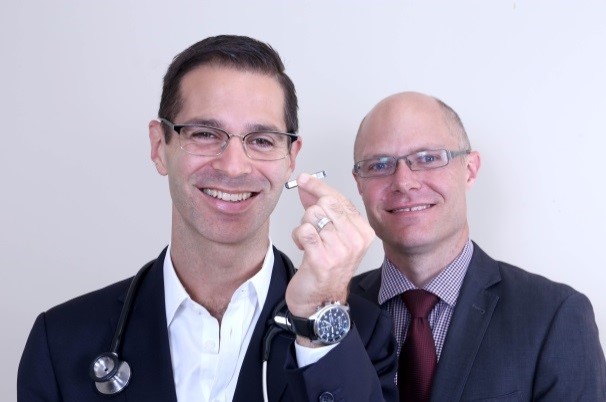News
St George Private - The Heart of Innovation
Feb 24, 2017
Cardiac patients are being given a new lease on life thanks to new innovations at St George Private Hospital, which will soon open a new look Cath Lab complete with set and forget heart devices (implanted while the patient is awake); and the ability to replace diseased heart valves without cutting the patient’s chest.
- “NO CUT” HEART VALVE REPLACEMENT
- WORLD FIRST RADIATION TRACKER – 46% LESS EXPOSURE
- WIDE AWAKE HEART SURGERY
Cardiac patients are being given a new lease on life thanks to new innovations at St George Private Hospital, which will soon open a new look Cath Lab complete with set and forget heart devices (implanted while the patient is awake); and the ability to replace diseased heart valves without cutting the patient’s chest.
The hospital, has also been recognised in the world’s most respected international cardiology journal Eurointervention for reducing radiation doses by up to 46 per cent during common stent procedures – where a small slender tube is used to open narrowed coronary arteries and improve blood flow to the heart.
Tens of thousands of stent procedures are performed every year in Australia, either as a standard treatment for heart attack, or to prevent the future risk of heart attack and stroke.
Whilst stent procedures are no doubt life-saving, doctors have expressed concerns in recent years about the risk of ionising radiation exposure during cardiac procedures.
“During the past 25 years there has been a 700 per cent increase in the amount of overall patient exposure to radiation,” says St George Private Interventional Cardiologist Dr James Weaver who also operates at St George Public Hospital.
“A disproportionate amount of this is during tests for heart disease including coronary angiograms to evaluate and treat heart blockages.
“Whilst the need for doing these procedures almost always outweighs the very small risk of developing cancer from ionising radiation, it is still very important that all attempts are made to reduce a patient’s exposure during individual procedures.”
Dr Weaver’s study tracked 1011 patients in the world’s first commercially installed radiation-dose tracking system at St George Private.
During the study, which used a special colour-mapping tracking system to make normally invisible radiation pathways visible - doctors were able to reduce patient radiation exposure by 46 per cent during stent insertion.
Ramsgate semi-retired accountant Terence Healey, 69, who benefited from the new technology during a stent procedure said his doctors later told him his arterial blockage was “like cement”.
“Before the stent procedure I had been treated for other heart blockages, Non-Hodgkins Lymphoma and I also have diabetes and arthritis. I’ve had so many scans I couldn’t count them all and I was very grateful when the doctor explained it all so thoroughly.
“When I weighed up the risk though – the risk of a cardiac event was too great to ignore. I was a heart attack waiting to happen.”
Dr Weaver said that the new technology will now be integrated into a second new Cardiac Catheter Laboratory which would also include state-of-the-art imaging systems, as well as the capability to perform heart valve implantation without the need for bypass surgery – a technique known as TAVI (Transcatheter Aortic Valve Implantation).

During this procedure a new tissue valve is guided and positioned within the aortic valve, all done without cutting the chest.
Dr Weaver said work on the new Cath Lab would begin this month (February) and will complete by mid 2017 – providing “significant improvements for the patients of the St George and Sutherland.”
The hospital has also recently introduced wide awake, “set and forget” heart implant procedures, where miniature heart devices are implanted under the chest skin in just 45 seconds during a local anaesthetic.
The Loop Recorder devices, which are also MRI compatible, are roughly the size of a paper clip and monitor the heart’s rhythm for abnormalities. Any “abnormal” data is the wirelessly transmitted back to the treating physician once a day, providing 24/7 monitoring of the patient.
“In the past, these patients could typically visit their cardiologist every three to six months. This way any heart episodes for heart-related syncope (dizziness, fainting and blood pressure drops) can be monitored very quickly and picked up no matter what they are doing,” says Fellow Interventional Cardiologist Dr Rahn Ilsar.